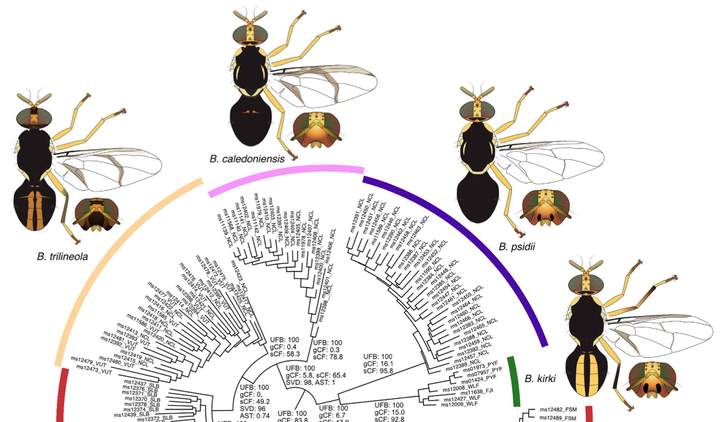A phylogenomic approach to species delimitation in the mango fruit fly (Bactrocera frauenfeldi) complex: A new synonym of an important pest species with variable morphotypes (Diptera: Tephritidae)
 Image credit: C. Doorenweerd
Image credit: C. DoorenweerdAbstract
Species that are dispersed across oceanic islands can have strong population structure due to genetic isolation, which makes it difficult to determine realistic and meaningful species boundaries. This becomes especially problematic when pest species are involved, and can result in undetected new invasions. The mango fruit fly, Bactrocera frauenfeldi (Schiner), is currently considered to be one of five morphologically similar members in a monophyletic species group distributed across Southeast Asia, Australasia, and Oceania, including three major pests. We used a phylogenomic approach with highly multiplexed amplicon sequencing to test species limits and evaluate the relationships among species in the B. frauenfeldi species complex and two closely related species. We obtained sequence data from 196 specimens for 395 nuclear DNA loci, totalling 102 kb, of which 2.2 kb were parsimony informative sites. Based on morphology, biogeography, and phylogenetic analyses, we conclude that there are five distinct species in the complex in our phylogeny. Our results show that the morphological differences between B. frauenfeldi and B. albistrigata (de Meijere) are part of a continuum that cannot be phylogenetically separated into monophyletic groups. We therefore synonymize the names of two major pests: B. albistrigata syn. rev. with B. frauenfeldi, making B. frauenfeldi now recognized as a widespread pest across Australasia and Southeast Asia. We evaluated the use of COI for pest recognition and conclude that it cannot reliably distinguish between six of the seven species we studied, thus new molecular approaches will be necessary for effective management and the prevention of incursions.